We made a group order of surprise boxes from Electronic Goldmine to have some fun and jump-start our stock of interesting components. The boxes arrived yesterday, and after the meeting today we opened and sorted them, finding some interesting stuff along the way.
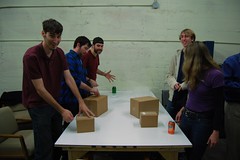
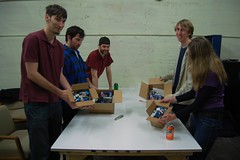
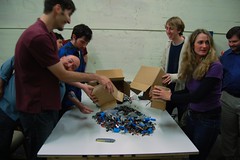

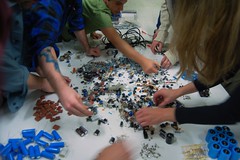
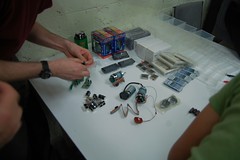
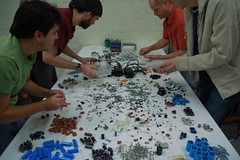
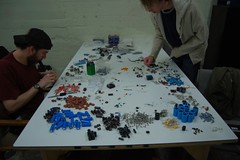

The choice bits consisted of:
4x 10x2 character 14-segment VFDs
7x 96x64 1" monochrome LCDs
4x motors with high resolution encoders
2x passive infrared motion detectors
2x window/door security sensors
2x small R/C cars
5x GSM cell phones
4x security keypads
The small component haul was mostly capacitors, with some resistors, potentiometers (dual log!), and fuses in reasonable quantity as well.
I think the outcome, in parts and fun, was well worth the ~$70 we spent in total. We already have a small contribution towards the next order, which I tentatively put 3 weeks away.









The choice bits consisted of:
4x 10x2 character 14-segment VFDs
7x 96x64 1" monochrome LCDs
4x motors with high resolution encoders
2x passive infrared motion detectors
2x window/door security sensors
2x small R/C cars
5x GSM cell phones
4x security keypads
The small component haul was mostly capacitors, with some resistors, potentiometers (dual log!), and fuses in reasonable quantity as well.
I think the outcome, in parts and fun, was well worth the ~$70 we spent in total. We already have a small contribution towards the next order, which I tentatively put 3 weeks away.
Comments
Post a Comment